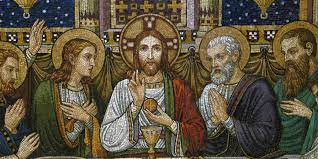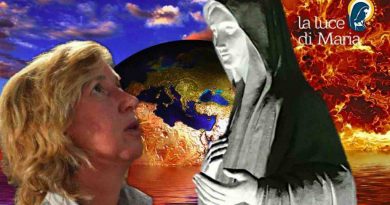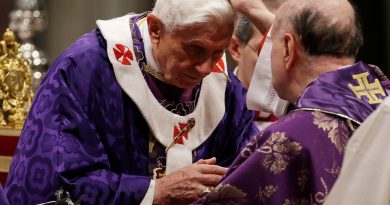Bishop Melito of Sardis’ homily for Easter from the Office of Readings of Holy Thursday
One of the homilies which really speaks to me in the celebration of the liturgy of the hours of Holy Thursday is, certainly, the homily for Easter by Bishop Melito of Sardis. The reasons why it speaks to me are several.
First of all I like the examples Melito brings to say that Christ suffered in different key figures in the Old Testament. He says: It is he who endured every kind of suffering in all those who foreshadowed him. In Abel he was slain, in Isaac bound, in Jacob exiled, in Joseph sold, in Moses exposed to die. He was sacrificed in the Passover lamb, persecuted in David, dishonored in the prophets.
Second, I like also the fact that Melito of Sardis mentions Jesus’ kenosis, which is so central to his salvific act, namely that from God he became a human being, like you and me to conquer death. Thus preaches Melito: For the sake of suffering humanity he came down from heaven to earth, clothed himself in that humanity in the Virgin’s womb, and was born a man. Having then a body capable of suffering, he took the pain of fallen man upon himself; he triumphed over the diseases of soul and body that were its cause, and by his Spirit, which was incapable of dying, he dealt man’s destroyer, death, a fatal blow.
Third, in this homily Jesus is presented as the New Moses who leads from slavery to freedom. Melito says: He is the One who covered death with shame and cast the devil into mourning, as Moses cast Pharaoh into mourning . He is the One that smote sin and robbed iniquity of offspring, as Moses robbed the Egyptians of their offspring. He is the One who brought us out of slavery into freedom, out of darkness into light, out of death into life, out of tyranny into an eternal kingdom; who made us a new priesthood, a people chosen to be his own for ever. He is the Passover that is our salvation.
Fourth, in this homily we also notice the sacrificial aspect of our redemption brought about by Christ. Thus Melito affirms: He was led forth like a lamb; he was slaughtered like a sheep. He ransomed us from our servitude to the world, as he had ransomed Israel from the hand of Egypt; he freed us from our slavery to the devil, as he had freed Israel from the hand of Pharaoh. He sealed our souls with his own Spirit, and the members of our body with his own blood... He was seized from the flock, dragged off to be slaughtered, sacrificed in the evening, and buried at night. On the tree no bone of his was broken; in the earth his body knew no decay. He is the One who rose from the dead, and who raised man from the depths of the tomb.
The last aspect I would like to mention from this outstanding homily is its mariological import. Behind Christ, who gave himself up for you and me on the Cross, there is the sacrificial witness of Mary, Our Mother, too. Melito states: It is he who was made man of the Virgin, he who was hung on the tree; it is he who was buried in the earth, raised from the dead, and taken up to the heights of heaven. He is the mute lamb, the slain lamb born of Mary, the fair ewe.
It would be nice if we go through this homily in our prayer time and let it speak to us and prepare us for what lies ahead in this paschal triduum.
Fr Mario Attard OFM Cap





